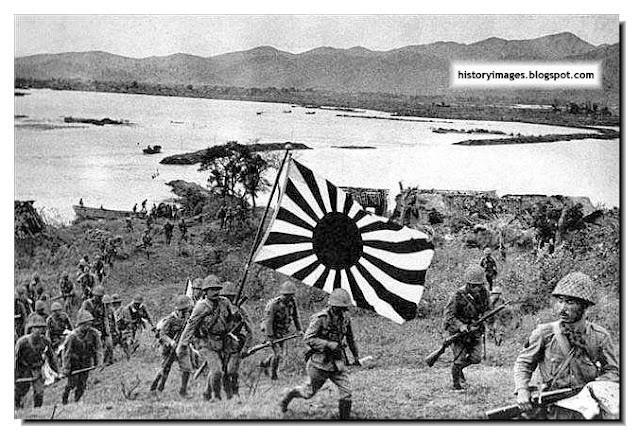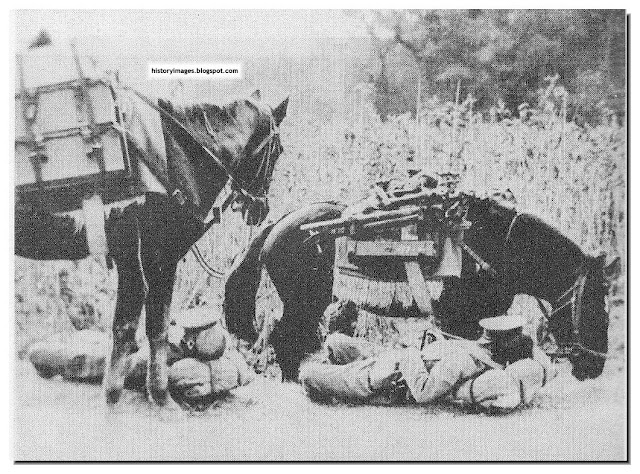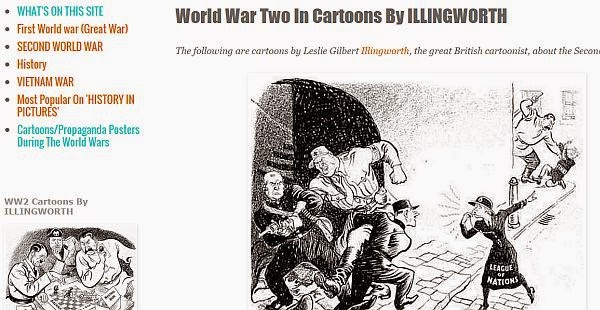World War Two. We read mostly about D-Day. May be Stalingrad. We see images of American soldiers. British soldiers. German soldiers. But rarely of Japanese soldiers. The reason is that not many pictures of Japanese soldiers are available.
Below are some images. Rare. They were soldiers too. Like any other.
Related
Japanese Soldiers During WW2: In Pictures
More Images: Japanese WW2 Soldiers
Below are some images. Rare. They were soldiers too. Like any other.
The Japanese execute a captured American airman. To a westerner this image may seem barbaric. But one should understand that the Japanese had their own history, its culture and traditions, according to which such things were OK.
One of the pilots who participated in the Doolittle raid on Japan in April 1942, landed in China and was captured by the Japanese.
WHAT WAS THE "DOOLITTLE RAID"?
WHAT WAS THE "DOOLITTLE RAID"?
The Doolittle Raid, on 18 April 1942, was the first air raid by the United States to strike the Japanese Home Islands (specifically Honshu) during World War II. By demonstrating that Japan itself was vulnerable to American air attack, it provided a vital morale boost and opportunity for U.S. retaliation after the Japanese attack on Pearl Harbor on 7 December 1941. The raid was planned and led by then-Lieutenant Colonel James "Jimmy" Doolittle, USAAF. Doolittle would later recount in his autobiography that the raid was intended to bolster American morale and to cause the Japanese to begin doubting their leadership:
The Japanese people had been told they were invulnerable ... An attack on the Japanese homeland would cause confusion in the minds of the Japanese people and sow doubt about the reliability of their leaders. There was a second, and equally important, psychological reason for this attack ... Americans badly needed a morale boost.
Sixteen U.S. Army Air Forces B-25B Mitchell medium bombers were launched from the U.S. Navy's aircraft carrier USS Hornet deep in the Western Pacific Ocean. The plan called for them to bomb military targets in Japan, and to continue westward to land in China—landing a medium bomber on the Hornet was impossible.
All of the aircraft involved in the bombing were lost and 11 crewmen were either killed or captured—with three of the captured men executed by the Japanese Army in China. One of the B-25s landed in the Soviet Union at Vladivostok, where it was confiscated and its crew interned for more than a year. Thirteen entire crews, and all but one crewman of a 14th, returned either to the United States or to American forces.
The raid caused negligible material damage to Japan, but it succeeded in its goal of helping American morale, and casting doubt in Japan on the ability of the Japanese military leaders. It also caused Japan to withdraw its powerful aircraft carrier force from the Indian Ocean to defend their Home Islands, and the raid contributed to Admiral Isoroku Yamamoto's decision to attack Midway—an attack that turned into a decisive rout of the Imperial Japanese Navy (IJN) by the U.S. Navy near Midway Island in the Central Pacific.
Approximately 250,000 Chinese civilians were massacred by the Japanese Army in eastern China in retaliation for Chinese assistance of the attacking American aviators
Emperor Hirohita inspects his troops.
General Sakai is in Hong Kong. December 25, 1941
A victorious General Sakai enters Hong Kong. The Battle of Hong Kong took place during the Pacific campaign of World War II. It began on 8 December 1941 and ended on 25 December 1941 with Hong Kong, then a Crown colony, surrendering to the Empire of Japan.
A victorious General Sakai enters Hong Kong. The Battle of Hong Kong took place during the Pacific campaign of World War II. It began on 8 December 1941 and ended on 25 December 1941 with Hong Kong, then a Crown colony, surrendering to the Empire of Japan.
General Yamashita. General Tomoyuki Yamashita (November 8, 1885 – February 23, 1946) was a general of the Japanese Imperial Army during World War II. He was most famous for conquering the British colonies of Malaya and Singapore, earning the nickname "The Tiger of Malaya".
Japanese top brass with the keys of Singapore
Japanese ski patrol at Chishima Islands (Kuril Islands). The Kuril islands are disputed territory with both Russia and Japan making claims on it
Japanese army officers confer
Japanese Soldiers During WW2: In Pictures
More Images: Japanese WW2 Soldiers


































































